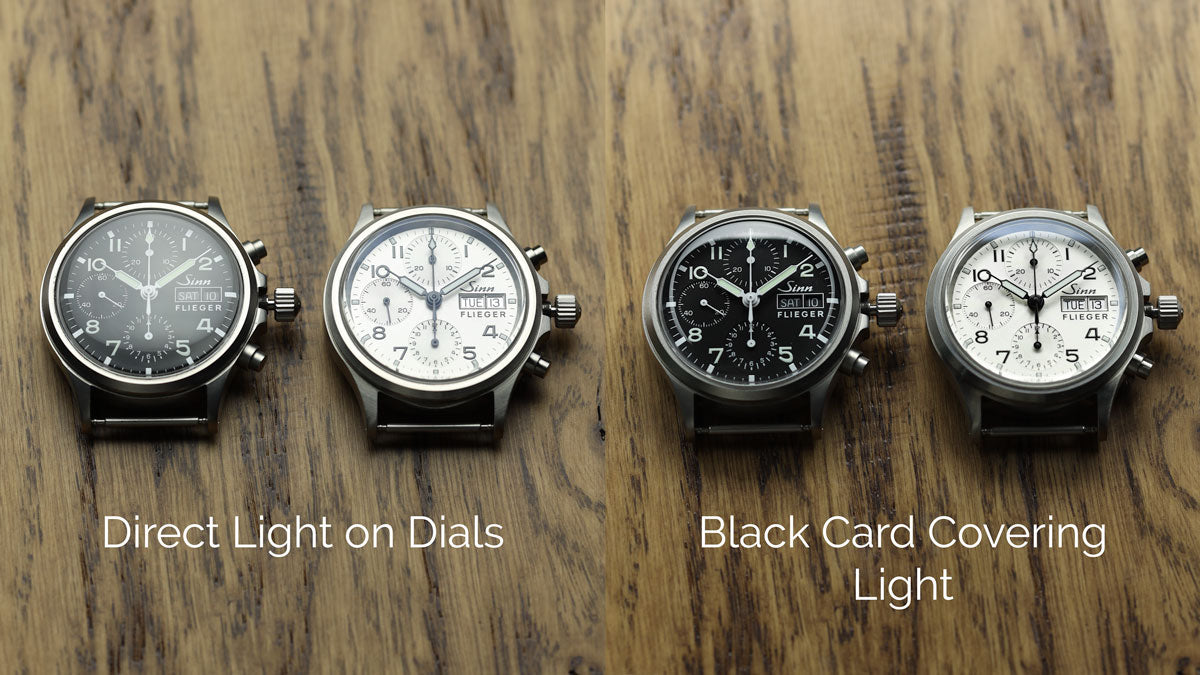I asked our talented in-house photographer Alice Anderson her top tips for watch photography, here's what she had to say...
When I get to work each morning, opening up the studio and setting up for the day has become second nature. After years of being a photographer - as a hobbyist and professionally - photography really has become my persona. I naturally find myself setting up props, watches and lighting as though it’s part of my muscle memory. But if I turn back the clocks (haha, excuse the pun), to when I first started my journey in watch photography… Let’s just say I like to think I’ve come a long way!
I hadn’t considered how second nature photography is to me until my colleague in Editorial, Richard (most of you are probably familiar with Richard by now, right?), asked me to throw some helpful tips his way. Of course, that conversation soon evolved, and I am currently writing this piece for the mag. And what better time to start a series like this than World Photography Day!? As there are a lot of aspects to watch photography, I’ve decided to break this down into a collection of photography tips. Watches are one of the most difficult items to photograph, so I thought it’d be best to kickstart this series with the basics of getting a decent shot of your pride and joy.
 Christopher Ward C65 Dune - Credit WatchGecko
Christopher Ward C65 Dune - Credit WatchGecko
First things first, the basics
People first ask me, ‘What camera equipment do you use?’. While this aspect is undeniably essential in watch photography, I know that not everyone is willing to invest hundreds of pounds in photography gear. Whether you’re using high-end camera equipment or just your phone, these top tips for watch photography will help get you started.
So, you’ve just bought a new watch, and you’re eager to show it off to the world. We’ve all been there, like a proud parent, and before you know it your phone is filled with 100s of essentially identical photos. It’s probably taken so many shots to get right due to the reflections, and in this case, your perfect assistant can most likely be found in your home…
 Black and white card used within Photography - Credit WatchGecko
Black and white card used within Photography - Credit WatchGecko
Remember always to carry some black & white card!
Most reflections can be controlled by holding a piece of black or white card over your watch. If you are photographing your watch outside, or you have little control over your lighting, then you may find that too much light will wash out the dial. Below is an example of how the lighting will affect your dial. The lighting is the same in both shots, except the image on the right has been blocked out by a piece of black card.
 Image showing how lighting affects your imagery - Credit WatchGecko
Image showing how lighting affects your imagery - Credit WatchGecko
White card or paper is better suited for when the lighting may be limited or if there are too many reflections on polished areas. One of the best examples for this can be seen on polished hands. Without enough light on the hands, they may appear black, ultimately making them illegible against a darker dial. Simply hold a bit of paper over your watch at the right angle, and those hands should pop!
You can additionally use white card or paper to help bounce light onto darker areas. This can be especially useful for helping lighten up the case, or reduce any strange reflections from your surroundings. If you’re happy to spend a little bit of money, then I’d highly recommend getting yourself a diffuser!
It’s always ten past ten in a watch photographer's world.
 Tudor Submariner on Besford Strap - Credit WatchGecko
Tudor Submariner on Besford Strap - Credit WatchGecko
You may have noticed a lot of watch photos have the time set to 10:10, and if you haven’t seen then don’t worry; it wasn’t something I noticed when starting in watch photography either! The hands will frame a logo nicely and generally look more aesthetic when set to 10:10. A lot of brands will also set the seconds hand to around 31 seconds as this helps create a symmetrical look. There’s probably some scientific research that explains why humans are drawn to symmetry, but I won’t pretend to know what that is. I do agree that it looks pretty neat, though.
Use hacking to your advantage.
For those familiar with editing software, if your watch has a hacking movement, consider leaving the crown undone while you take your shots. This way you can easily edit the crown back in during post-production. The advantage of this is that you can take your time to get the shot right without continuously changing the time back if you want the 10:10 look.
 Image showing crown out - Credit WatchGecko
Image showing crown out - Credit WatchGecko
If you’re not experienced with editing tools such as Photoshop (or even Paint!), but you also want to capture your watch set at 10:10; another helpful trick is to set the time five minutes prior. Adjusting the hands to 10:05 will give you a five-minute window to position your watch nicely or practice your shots.
Also, as useful as hacking is, it’s pretty useless if combined with water.
Remember to keep the crown in if you’re photographing a watch in water…
Or if you’re out in the vast deserts during a sandstorm…
Or in any other situation which may result in something getting jammed inside the crown…
 Image showing smudge on watch - Credit WatchGecko
Image showing smudge on watch - Credit WatchGecko
All I have to do is clean (clean, clean, clean, clean, clean…)
Sometimes it doesn’t seem to matter how much I clean a watch, I’ll always find more dust or a smudge. It can be quite tricky to edit out smudges, so it will make a huge difference to clean your watch thoroughly first. It’s a real pain when you only notice the smudges after taking the photo, so making sure it’s clean from the get-go is a must for me.
(I even struggled to take this photo above as my auto-response is to tidy up any watch before shooting!)
If your watch needs a deep clean, then you can check out our article on how to do that here, and we even sell some handy watch cleaning cloths too!
Exploring composition, props, and locations
 Zenith El Primero - Credit WatchGecko
Zenith El Primero - Credit WatchGecko
I’ll make this a brief one as I know that there’s plenty to talk about when it comes to composition; it definitely deserves its own write-up! An aesthetic backdrop can help turn a plain shot into something eye-catching. Whether you’re out in the city or hiking the Himalayan mountains, there’s always an interesting background to be utilised. If you’re at home then try find some relevant props to fill your background with to really help build the
If you aim to capture that perfect wrist shot, one of the most important tips is ensuring the watch takes centre stage as the main focal point. By framing the image slightly wider, you’ll have more flexibility to play around with cropping and adjustments later on. Remember, you can always crop in further, but you can’t expand an image that is already heavily cropped…
Okay, yes, AI photo manipulation is getting scarily advanced, but let’s not let the robots steal our creativity!
 Zenith Wrist Shot - Credit WatchGecko
Zenith Wrist Shot - Credit WatchGecko
So, what’s next?
As I mentioned previously, there is so much I can write regarding watch photography that I’m pretty sure I could write a novel if I let myself get carried away. The next write-up in this series will focus more on composition to help you with angles, depth of field, and the best ways to get that aesthetic shot, so I really hope you’ll join me on this photography journey.







